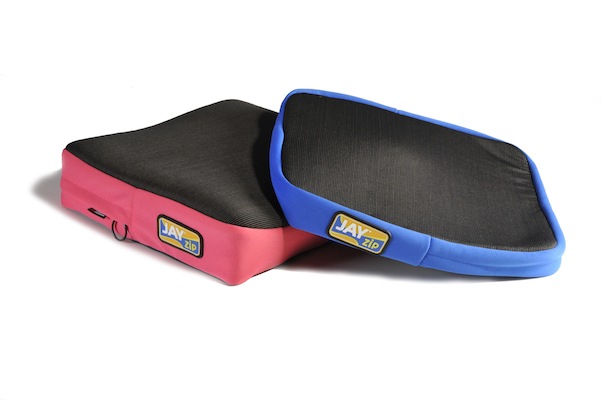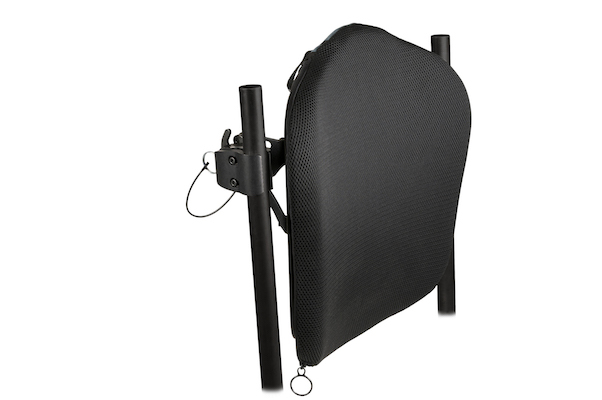
Pediatric Wheelchair
Seating and Positioning
Seating and Positioning
Seating systems are groups of wheelchair components that make contact with your child’s body to provide support in a sitting position. These individually prescribed components include the cushion, back support and postural supports.
Why is it important to have a good seating system?
Proper seating provides stability and helps your child comfortably participate in activities of daily living. Individually configured seat and backs can help accommodate physical problems, like spasticity or low tine, as well as help prevent pressure injuries.
How do I know which seating system is for me?
To effectively match your child with the proper seating components, we evaluate his or her physical and functional needs. Based on the evaluation, the clinical team crafts an individually configured seating system with your and your child’s input.
The evaluation includes:
- Your child’s goals and challenges
- Your child’s current and desired function
- A hands-on physical evaluation to determine interferences with your child’s ability to sit
- Pressure mapping, which shows how pressure is distributed across your child’s cushion. This allows our team to identify high-pressure and low-pressure areas on your child’s cushion and make adjustments that provide pressure relief
- A trial period with the type of equipment the clinical team feels will accomplish your child’s goals
Materials
Our cushions, backs and supports are made of a combination of materials — typically foam, fluid, air and gel — that provide a stable, comfortable surface with properly distributed pressure. Some materials, like foam, retain heat more than others. If your child has to decrease heat retention because of heat intolerance or increased sweating, then this should be discussed during the evaluation process.
All cushions have covers, and many have a choice of covers that are designed to deal with heat build-up. For those with more severe incontinence issues, we offer heavy-duty fluid-resistant covers. All of our cushions and backs have fluid-resistant covers that are easily cleaned.

Cushions
Cushions support the areas under the pelvis (buttocks) and upper legs — the foundation of support. The position of the pelvis is key, as it dictates the position of the rest of the body. Cushions primarily provide stability or pressure distribution.
There are two ways to deal with pressure areas under the sitting bones: immersion and offloading. With immersion, your child sinks into the cushion so that it distributes pressure under the sitting bones. With offloading, sometimes referred to as “forced isolation,” pressure is removed from the problem area.
Backs
We offer a variety of chair backs that can support many different areas of your child’s back, like the posterior trunk, spine, pelvis and lateral trunk. Back supports are typically attached to chairs with back tubes that allow easy removal. Some back supports are built into the wheelchair system, but are still adjustable. Height, depth and angle adjustments are built-in to allow pre-set orientation of the back to match your child’s needs and to allow for change in function over time.

Supports for Posture
Certain supports are designed specifically to improve your posture, which also helps to alleviate back pain. Some supports can be detached from your custom wheelchair at any time. Each of these components is individually prescribed based on specific need. The most common components and their benefits include:
Lateral supports (lateral pelvic, thigh, trunk)
- Enhance the function of the cushion and/or back support
- Keep the pelvis in one place
- Guide the upper legs into the desired position
- More aggressive lateral support than provided by back supports
- Offset lateral support to accommodate trunk leaning or asymmetry
Medial knee supports (“pommels”)
- Separate the knees to maintain a certain angle at the hips
- Alleviate spasticity and increased muscle tone
Arm supports
- Provide support and/or control of the arms
Foot supports
- Provide support to maintain foot placement on the wheelchair footplate
Head supports
- Provide posterior, lateral and/or anterior support
Positioning belts
Keep feet on the wheelchair footplate or alternate foot support
Provide anterior support of the body into the wheelchair
Maintain the position of the pelvis/buttocks on the cushion
Stabilize the trunk into the back support
Additional Resources
NuDigest
Resources authored by experts from Numotion and across the industry for customers and medical professionals. These resources cover a variety of topics as they navigate the ever-changing landscape of CRT.
Learn morePro Tips
If you’re new to a wheelchair, or even a seasoned pro, you’re faced with many unknowns. Pro Tips cover a wide variety of practical topics.
Learn moreNuKnowledge
Read more about the most pressing topics impacting customers and people just like you.
Learn more